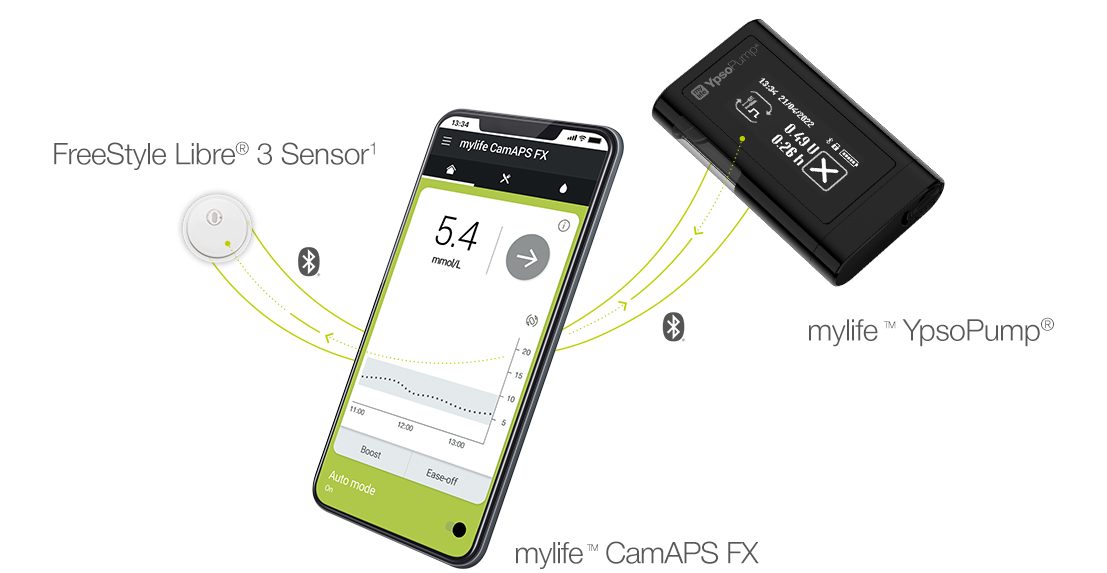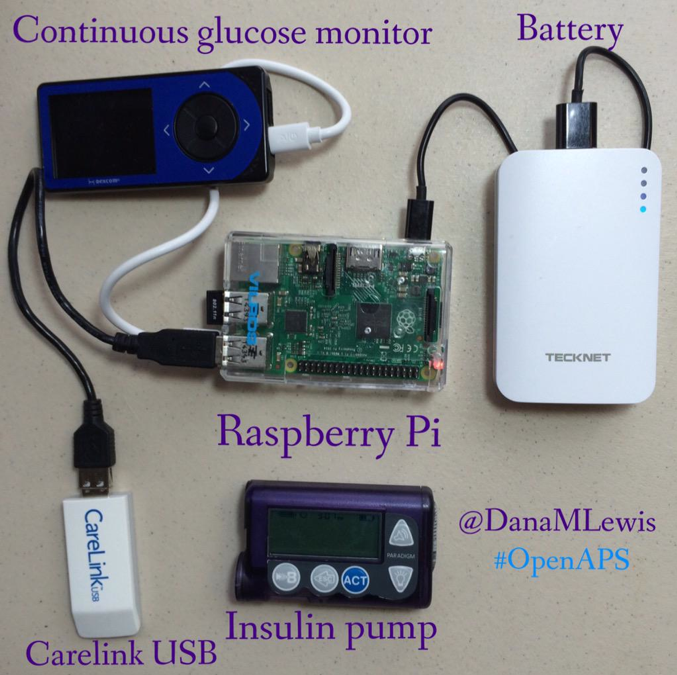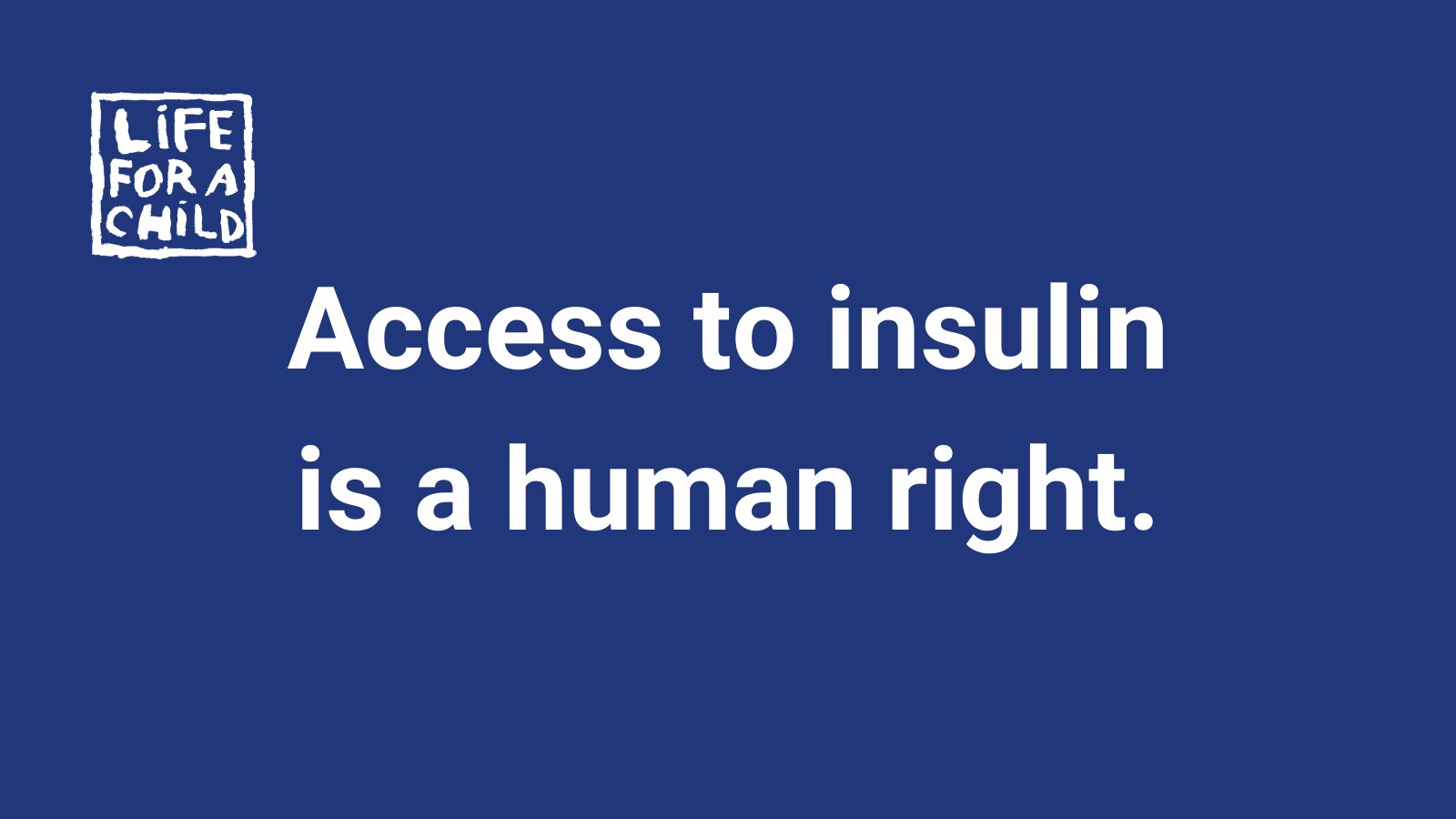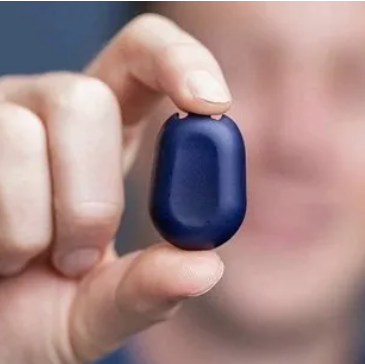Ypsomed, Abbott and CamDiab unveil new automated insulin delivery partnership for people with diabetes was announced by Ypsomed.com, on 27 April 2022.
 Ypsomed, Abbott, and CamDiab will work to accelerate the development of an automated insulin delivery system for people living with diabetes. The system is being designed to include Abbott’s FreeStyle Libre 3 sensor, CamDiab’s CamAPS FX algorithm, and Ypsomed’s mylife YpsoPump. The partnership demonstrates the companies’ collective desire to drive integrated solutions to help people with diabetes better manage their condition and improve health outcomes.
Ypsomed, Abbott, and CamDiab will work to accelerate the development of an automated insulin delivery system for people living with diabetes. The system is being designed to include Abbott’s FreeStyle Libre 3 sensor, CamDiab’s CamAPS FX algorithm, and Ypsomed’s mylife YpsoPump. The partnership demonstrates the companies’ collective desire to drive integrated solutions to help people with diabetes better manage their condition and improve health outcomes.
Ypsomed, Abbott, and CamDiab are partnering to develop and commercialize an integrated automated insulin delivery (AID) system to help lessen the burden of round-the-clock diabetes management for people with diabetes. The initial focus of the partnership will be in European countries.
Fingers crossed, T1Ds in the US, for any consideration and appropriate approval from the US FDA. We haven’t seen that yet, which is very disappointing and frustrating.
UPDATES from ATTD 2022
Tech on the Horizon: Updates on Glucose and Ketone Monitoring was written by Andrew Briskin for diaTribe.org, 29 April 2022. ATTD is the International Conference on Advanced Technologies and Treatments for Diabetes.
Lots of info on the upcoming new CGMs coming on the market soon: Dexcom G7, Medtronic Synergy, Abbott Freestyle Libre3, Senseonics Eversence E3. But there are more exciting entries coming up!
 Non-invasive glucose monitoring: GWave is a non-invasive blood glucose meter that can measure blood glucose levels without the need for fingersticks or inserting a device. Hagar, the company that created the device, which is being developed in both Israel and the United States, uses radiofrequency technology, sending out a signal that is reflected by glucose in the blood. The device measures blood glucose levels based on the unique pattern of reflection, combined with an artificial intelligence algorithm. A small study conducted in 23 people at the Weizmann Institute in Israel demonstrated that GWave was as accurate as standard blood glucose meter (BGM) test strips, with all GWave measurements within the standard accuracy zone of available BGM test strips. Further research is needed before the GWave can be submitted for FDA approval, however,a 250-person trial underway in Israel, with more planned over the next few years in the United States.
Non-invasive glucose monitoring: GWave is a non-invasive blood glucose meter that can measure blood glucose levels without the need for fingersticks or inserting a device. Hagar, the company that created the device, which is being developed in both Israel and the United States, uses radiofrequency technology, sending out a signal that is reflected by glucose in the blood. The device measures blood glucose levels based on the unique pattern of reflection, combined with an artificial intelligence algorithm. A small study conducted in 23 people at the Weizmann Institute in Israel demonstrated that GWave was as accurate as standard blood glucose meter (BGM) test strips, with all GWave measurements within the standard accuracy zone of available BGM test strips. Further research is needed before the GWave can be submitted for FDA approval, however,a 250-person trial underway in Israel, with more planned over the next few years in the United States.
Read more: Wave of the Future: New Glucose Technology Could Revolutionize Care.
 Ketone Monitoring: While glucose management is generally the main focus of diabetes therapies and technologies, experts have also proposed that continuous ketone monitoring (CKM) may benefit people with diabetes, especially those with type 1 diabetes. People with type 1 can experience a potentially deadly complication known as diabetic ketoacidosis (DKA). Without enough insulin, the body breaks down fat for energy, producing ketones that are acidic and can accumulate in the blood. Too high levels of blood ketones cause abdominal pain, vomiting, and coma, if untreated. Ketone monitoring may help detect, or possibly prevent, an episode of DKA.
Ketone Monitoring: While glucose management is generally the main focus of diabetes therapies and technologies, experts have also proposed that continuous ketone monitoring (CKM) may benefit people with diabetes, especially those with type 1 diabetes. People with type 1 can experience a potentially deadly complication known as diabetic ketoacidosis (DKA). Without enough insulin, the body breaks down fat for energy, producing ketones that are acidic and can accumulate in the blood. Too high levels of blood ketones cause abdominal pain, vomiting, and coma, if untreated. Ketone monitoring may help detect, or possibly prevent, an episode of DKA.
The first trials testing CKM devices in humans were done by Abbott in 2019 and published in the Journal of Diabetes Science and Technology in 2021, Klonoff said. Experts envisioned that this technology could potentially be integrated into CGMs, insulin pumps, or automated insulin delivery (AID) systems. These devices, which could track ketone levels in addition to glucose levels, could be useful not only for those with type 1 on an SGLT-2 inhibitor, but any person with diabetes on insulin, recurrent DKA, or possibly even for those who follow a keto diet.
Read more: Tech on the Horizon: Updates on Glucose and Ketone Monitoring
What We Wish You Knew and Why: Open-Source DIY AID, Access, and Stigma was written by Natalie Sainz for diaTribe.org, 27 April 2022. At the ATTD 2022 conference, diabetes advocates delivered presentations on open-source AID, access to insulin and diabetes supplies, and diabetes stigma in the #dedocº Symposium.
Open-source or Do-It-Yourself (DIY)
 Open-source or Do-It-Yourself (DIY) automated insulin delivery (AID) is one such option that could improve a person’s experience with diabetes, according to Dana Lewis, creator of the Do-It-Yourself Pancreas System (#DIYPS) and founder of the open-source artificial pancreas system movement (#OpenAPS). While not for everyone, open-source DIY AID enables people with diabetes to create and customize their own AID systems using existing technology and algorithms while tailoring it to their lifestyles.
Open-source or Do-It-Yourself (DIY) automated insulin delivery (AID) is one such option that could improve a person’s experience with diabetes, according to Dana Lewis, creator of the Do-It-Yourself Pancreas System (#DIYPS) and founder of the open-source artificial pancreas system movement (#OpenAPS). While not for everyone, open-source DIY AID enables people with diabetes to create and customize their own AID systems using existing technology and algorithms while tailoring it to their lifestyles.
Lewis presented the evidence and consensus on open source AID in the #dedocº Symposium on the opening day of the Advanced Technologies and Treatments for Diabetes (ATTD) 2022 conference in Barcelona, Spain. #dedoc° was founded in 2012 by Bastian Hauck, who created the Twitter hashtag #dedoc to host weekly chats for the German chapter of the Diabetes Online Community (DOC). This year, #dedocº put together the symposium, chaired by diabetes advocate Renza Scibilia, as a way to include the voices of people with diabetes at the conference.
Access to insulin and diabetes supplies
 Access to insulin and diabetes supplies continues to be an issue and Emma Klatman, the global policy and advocacy manager at Life for a Child, discussed its importance in another presentation during ATTD 2022 titled, “I wish we all knew that access to diabetes care is a human right.”
Access to insulin and diabetes supplies continues to be an issue and Emma Klatman, the global policy and advocacy manager at Life for a Child, discussed its importance in another presentation during ATTD 2022 titled, “I wish we all knew that access to diabetes care is a human right.”
Life for a Child, a non-governmental organization, provides insulin and diabetes supplies to 45 countries across the globe and supports over 34,000 young people with diabetes, as well as doing work in research and in advocacy. Access to diabetes care is rooted in international human rights law.“Access to diabetes care is rooted in international human rights law. Far too many living with diabetes across the globe cannot rely on their government and health systems to keep them alive and thriving.”
Diabetes Stigma
 Put simply, “diabetes stigma exists everywhere,” Matthew Garza, the managing editor at the diaTribe Foundation said.
Put simply, “diabetes stigma exists everywhere,” Matthew Garza, the managing editor at the diaTribe Foundation said.
Stigma is found in how people with diabetes are portrayed in the media, in conversations with friends and coworkers, and in the clinical setting, and even within the diabetes community. Stigma is also directly connected to how we talk about diabetes and to people with diabetes. People with diabetes are all too familiar with comments about their body weight or shame about injecting insulin and having to wear pumps on their skin.
Regardless of the source, “stigma has a real impact on mental and physical health, leading to fear, anger, low self-esteem, loneliness, and anxiety,” Garza said. Diabetes stigma can also result in worse self-management of diabetes and attempts to conceal one’s condition, ultimately resulting in worse clinical outcomes.
Read more: What We Wish You Knew and Why: Open-Source DIY AID, Access, and Stigma
Technology for Diabetes that you can’t get yet: Luna was written by Tim Street for Diabettech.com, 29 April 2022.

 Luna intends to provide a way for MDI users to maintain in-range glucose throughout the night with minimal human involvement. As they say, “Sleep. Finally. For the masses.”. Founded by John Sjolund, of Timesulin fame, later acquired by Bigfoot, Sean Saint, formerly of Companion (creator of the In-Pen) and long-standing in the diabetes tech world, and Jon Brilliant (also ex-Bigfoot), the track record of the team gives good reason to believe they know what they are doing.
Luna intends to provide a way for MDI users to maintain in-range glucose throughout the night with minimal human involvement. As they say, “Sleep. Finally. For the masses.”. Founded by John Sjolund, of Timesulin fame, later acquired by Bigfoot, Sean Saint, formerly of Companion (creator of the In-Pen) and long-standing in the diabetes tech world, and Jon Brilliant (also ex-Bigfoot), the track record of the team gives good reason to believe they know what they are doing.
They call it “Automated Injections”, and the white paper is about as revealing as the website. It focuses on the effects of poor sleep, looking at both life and diabetes.
Some speculation on what Luna might be:
-
- Appears to be rechargeable which may allow MDI users to choose when they want to use it.
- Some sort of connected patch pump
- Software that uses “connected pen” technology to understand basal and bolus insulin delivered and derive IOB curves for pre-dosed insulin
- CGM integration to observe whether a user is in-range
- An automated insulin delivery algorithm that uses all of the above to add insulin when glucose levels are getting too high, and potentially, if used in place of overnight basal, suspend insulin when falling levels occur
- Maybe a single day use cannula that is inserted only when wanted
Read more: Technology for Diabetes that you can’t get yet: Luna
Technology for Diabetes that you can’t get yet: Pharmasens AG also by Tim Street for Diabettech.com, 29 April 2022
PharmaSens is a company developing three insulin pumps, which do three different things. The different pumps have different targets and do the following: 1. A standalone basal-bolus pump; 2. A connected pump with a smartphone app and 3. A combined pump and glucose sensor. All three pumps are based on the same chassis and look like a slightly sexier, cylindrical Omnipod.
Read more: Technology for Diabetes that you can’t get yet: Pharmasens AG



Regarding Stigma of Diabetes – there is also so much INACCURATE Diabetes info out there. There’s a novel called Revival Season by Monica West that has a central character – a child – with T1D. The understanding and portrayal of how that character would respond to an absence of insulin is so far from true that it made me fall out of my chair when I read it. She has a character get LOW and be fed CHOCOLATE when she has been without any insulin for weeks! Such laziness in research is inexcusable!
I am shocked and delighted by the number of new tech sensors that are being proposed. Much like the comment a few years ago about the economy: its the competition stupid.